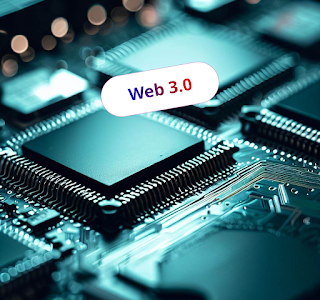Web 3.0: Revolutionizing the Internet for a Decentralized Future
The internet has transformed the way we communicate, access information, and conduct business. With the advent of Web 2.0, the internet became more interactive and social, ushering in an era of user-generated content and online collaboration. However, Web 2.0 also brought concerns regarding data privacy, centralization, and lack of user control. Enter Web 3.0, the next generation of the internet that aims to address these challenges and revolutionize the digital landscape. In this article, we will explore the concept of Web 3.0, its key features, and the potential it holds for reshaping our online experiences.
Web 3.0: A Paradigm Shift
Web 3.0 represents a paradigm shift from the current web architecture. It emphasizes decentralization, privacy, and interoperability to overcome the limitations of Web 2.0. At its core, Web 3.0 leverages emerging technologies such as blockchain, decentralized networks, artificial intelligence, and the Internet of Things (IoT) to create a more secure, user centric, and efficient online ecosystem.
Decentralization: Empowering the Users
One of the fundamental pillars of Web 3.0 is decentralization. Unlike the centralized nature of Web 2.0, Web 3.0 envisions a network where data and services are distributed across a multitude of nodes, reducing the reliance on single authorities or intermediaries. Blockchain technology plays a crucial role in enabling this decentralization, providing transparent and tamper-proof records. Users gain more control over their data, eliminating the need for trusted third parties and enhancing privacy and security.
Enhanced Privacy and Security
Web 3.0 seeks to address the growing concerns about data privacy and security. With cryptographic protocols and decentralized identity systems, users have greater control over their personal information. Transactions can be conducted securely without relying on central authorities, mitigating the risks of data breaches and unauthorized access. Decentralized applications (DApps) built on platforms like Ethereum utilize smart contracts, enabling automated and trustless interactions while maintaining privacy.
Interoperability: Connecting the Dots
Web 3.0 aims to create a more interconnected digital landscape by promoting interoperability among different platforms and systems. It allows data and services to be shared and utilized across multiple applications and networks, encouraging collaboration and innovation. Through open standards and protocols, Web 3.0 fosters seamless integration, breaking down the silos of information and enabling efficient data exchange.
Empowering Technologies: AI, IoT, and Blockchain
Web 3.0 harnesses the power of emerging technologies to unlock new possibilities. Artificial intelligence (AI) and machine learning techniques enhance user experiences, personalize content, and automate decision making processes. AI algorithms can analyze vast amounts of data, providing valuable insights and improving efficiency.
The Internet of Things (IoT) further enhances the potential of Web 3.0 by connecting a wide range of devices, enabling real-time data sharing and collaboration. Smart homes, autonomous vehicles, and intelligent infrastructure are just a few examples of how the integration of IoT can revolutionize our lives.
Blockchain technology with its decentralized and immutable nature, ensures transparency, security and trust in Web 3.0. It enables secure transactions, establishes digital ownership and facilitates the development of decentralized applications.
Web 3.0 represents an exciting and transformative phase in the evolution of the internet. By embracing decentralization, enhancing privacy and security, promoting interoperability, and leveraging emerging technologies, Web 3.0 aims to empower users, protect their data, and create a more inclusive and efficient digital ecosystem.

Comments
Post a Comment